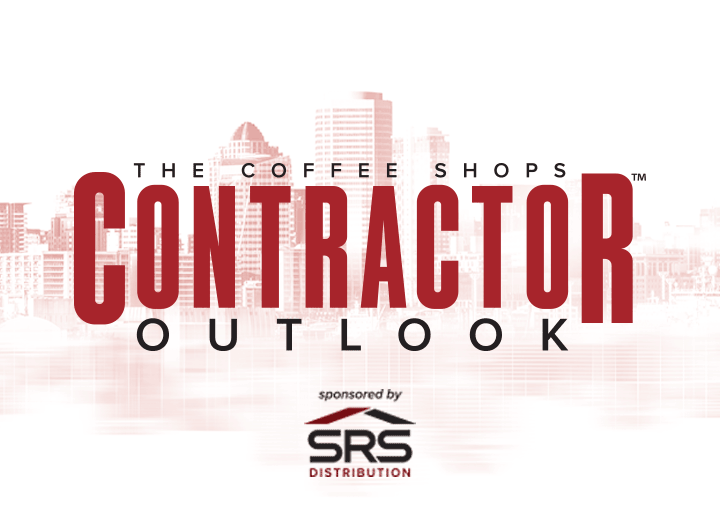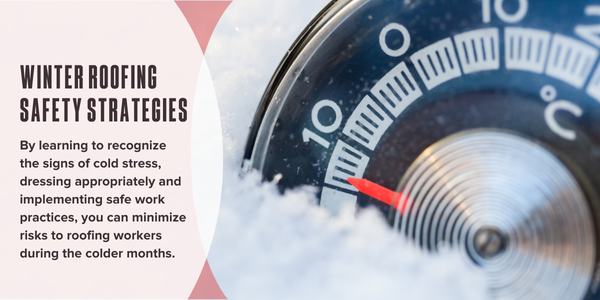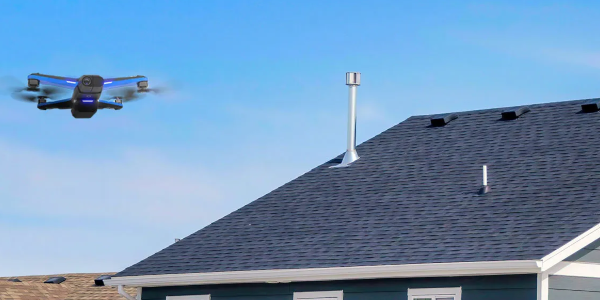UP TO THE MINUTE
Winter roofing safety strategies to combat cold stress
February 10, 2025 at 6:00 a.m.By Cotney Consulting Group.
Cold stress poses a serious risk to roofing workers during the colder months. However, by recognizing the signs, dressing appropriately and implementing safe work practices, you can minimize these risks.
Cold weather poses significant risks to roofing workers, potentially leading to various injuries or health effects collectively known as "cold stress." Roofers working outdoors on chilly days, in unheated buildings or cold and wet conditions are particularly susceptible. Recognizing the symptoms and taking proactive measures to prevent cold stress is crucial to safeguarding the well-being of your crew during the colder months.
What is cold stress?
Cold stress occurs when the body can no longer maintain its normal temperature. Exposure to cold conditions can result in dehydration, numbness, frostbite, trench foot (immersion foot) and hypothermia. Hazards associated with cold stress are divided into two categories:
- Local effects: Impact specific areas of the body exposed to the cold. This includes numbness, frostbite and immersion foot.
- Systemic effects: Affect the entire body. Hypothermia is the most severe systemic effect when the body's core temperature drops dangerously low.
Who is at risk?
Certain individuals are more vulnerable to cold stress than others. Workers who are not physically fit, have chronic illnesses, consume alcohol or drugs (including prescription medications) or are wet or damp from work are at a higher risk. Additionally, those who are fatigued, exposed to vibrations from tools, improperly dressed for the conditions or not acclimated to working in cold temperatures are more susceptible.
Recognizing cold stress symptoms
Early identification of cold stress is vital to prevent severe injuries. Here are common symptoms to watch out for:
- Shivering: The body's natural response to cold stress indicates that the body is trying to generate warmth.
- Numbness and loss of dexterity: A significant drop in manual dexterity due to cold can lead to safety hazards on the job.
- Behavioral changes: Workers may seek warm locations, add clothing layers or increase their work rate, indicating cold stress exposure.
- Hypothermia signs: Severe shivering, slow or slurred speech, confusion, hallucinations, a weak or irregular pulse and unconsciousness signal advanced cold stress.
If you notice any of these symptoms in workers, it's time to take immediate action to mitigate the effects of cold stress.
Best practices to prevent cold stress
Both employers and workers must take proactive measures to prevent cold stress. Here are some essential steps to ensure your crew remains safe in cold conditions:
1 - Proper clothing for cold weather
The right clothing is your first line of defense against cold stress. Proper insulation and ventilation are crucial. Rather than wearing a single warm garment, layering clothes provides better insulation and allows for adjustments based on activity levels and temperature changes.
- Layering: Use multiple layers to trap warm air between them. Workers can add or remove layers to suit changing weather conditions throughout the workday.
- Water-repellent outerwear: A water-repellent shell helps keep workers warm while allowing sweat to escape. Waterproof clothing may trap moisture, reducing insulation effectiveness.
- Insulation quality: Moisture can significantly decrease the insulating quality of clothing, so it's important to keep garments dry whenever possible.
2 - Employers' role in reducing cold stress
Employers can create a safer work environment by implementing the following practices:
- Provide training: Educate workers about the risks of cold stress, how to recognize symptoms and the proper response. Training should include guidelines for appropriate clothing, hydration and emergency procedures.
- Control temperature and wind: Heaters and windbreaks create warmer work areas. While not always possible, any reduction in wind exposure can help maintain body warmth.
- Rotate workers: Avoid prolonged exposure to cold by rotating workers in and out of cold areas. Schedule work during the warmest part of the day whenever possible.
- Encourage self-pacing: Allow workers to adjust their pace and take extra breaks. Establish a buddy system where workers look out for each other, especially in extreme conditions.
- Provide warm fluids: Workers should drink warm, non-caffeinated beverages to replace lost fluids and prevent dehydration.
3 - Create warm-up locations
During breaks, provide access to warm, sheltered areas where workers can escape the cold. Warm-up breaks help restore normal body temperature and reduce the risk of cold stress. These rest periods are particularly important for working in extremely low temperatures or wet conditions.
4 - First aid for cold stress
Employers should keep first aid supplies and equipment readily available on-site to respond to cold-stress incidents. In the event of suspected hypothermia or frostbite, immediate action is required. Move the affected worker to a warm location, provide warm fluids and seek medical attention for severe symptoms.
Conclusion
Cold stress poses a serious risk to roofing workers during the colder months. However, by recognizing the signs of cold stress, dressing appropriately and implementing safe work practices, both employers and employees can work together to minimize these risks. Providing proper clothing, training, warm-up breaks and access to warm fluids are key strategies to keep your crew safe and healthy when working in cold conditions.
Learn more about Cotney Consulting Group in their Coffee Shop Directory or visit www.cotneyconsulting.com.




















Comments
Leave a Reply
Have an account? Login to leave a comment!
Sign In